In this blog, I'm going to teach you how to effectively understand and address the confusing behavior of a dog growling but wagging tail.
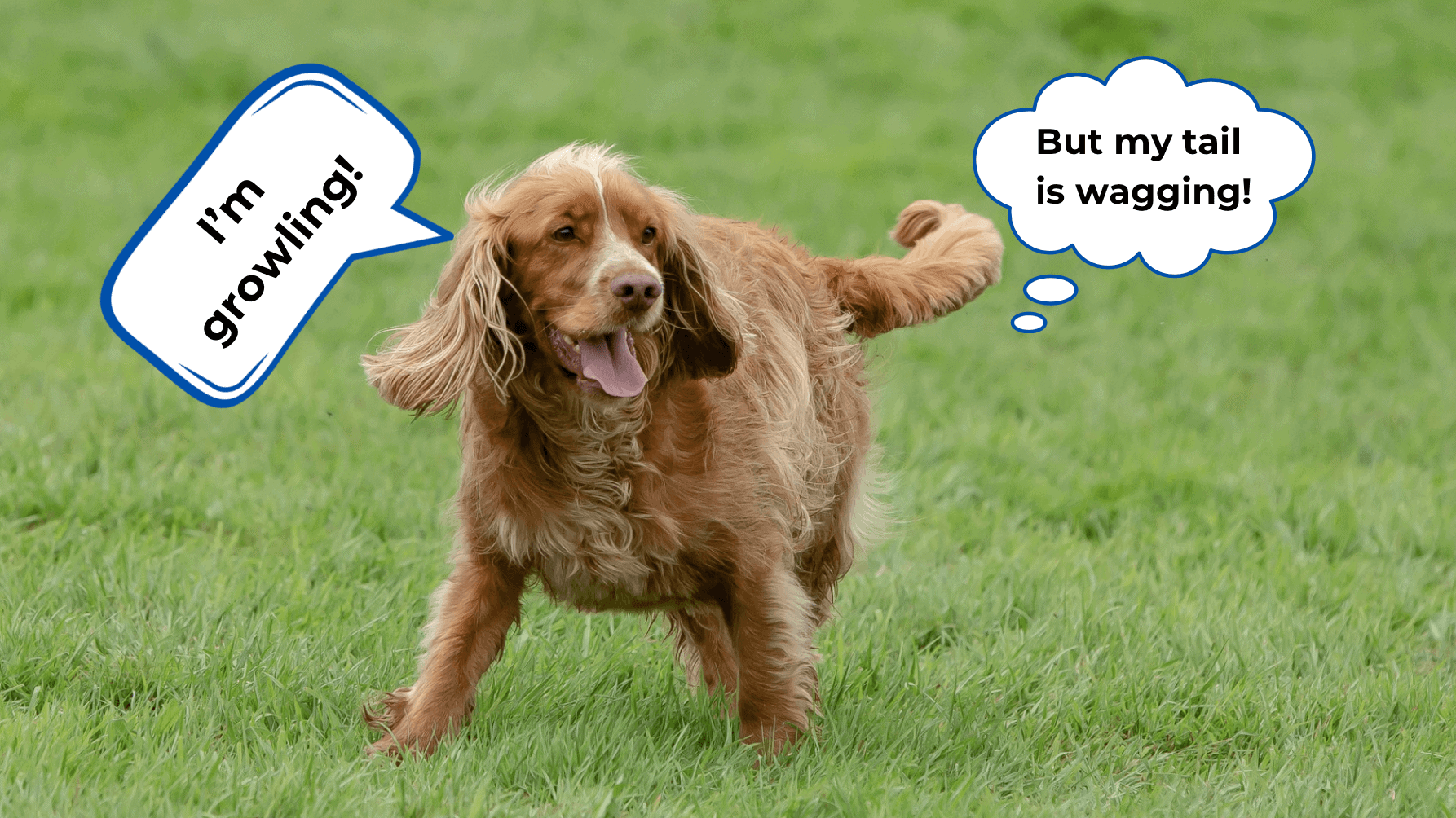
Did you know a wagging tail doesn't always mean a happy dog? And when a growl accompanies a wagging tail, it becomes even more confusing!
In this blog, I'm going to help you understand what your dog is really trying to tell you with their body language. You'll learn why they might growl and wag their tail at the same time (it's a thing!), how to tell the difference between a playful growl and a serious one, and what to do if your dog is doing both.
I also included helpful tips on training your dog, how to prevent accidents, and when to get the help of a professional dog trainer.
Let's dive in!
Key Takeaways
- Dogs use a variety of body signals to communicate, and it's important to consider the context and other signals alongside the tail wag.
- A playful growl is often accompanied by a loose, relaxed body posture and excited tail wagging. An angry growl, on the other hand, may involve a stiff body, raised fur, and bared teeth. It's important to distinguish between the two to respond appropriately.
- If your dog growls, it's crucial to stay calm and avoid punishment. Instead, identify the trigger, assess for any pain or discomfort, and give your dog space. For persistent growling, seek professional help from a trainer or behaviorist. Early training, socialization, and maintaining a consistent routine can also help prevent growling in the future.
Table of Contents
FREE DOG CALMING COURSEUnderstanding A Dog's Body Language Cues: What Does It Mean When a Dog Growls and Wags Their Tail?
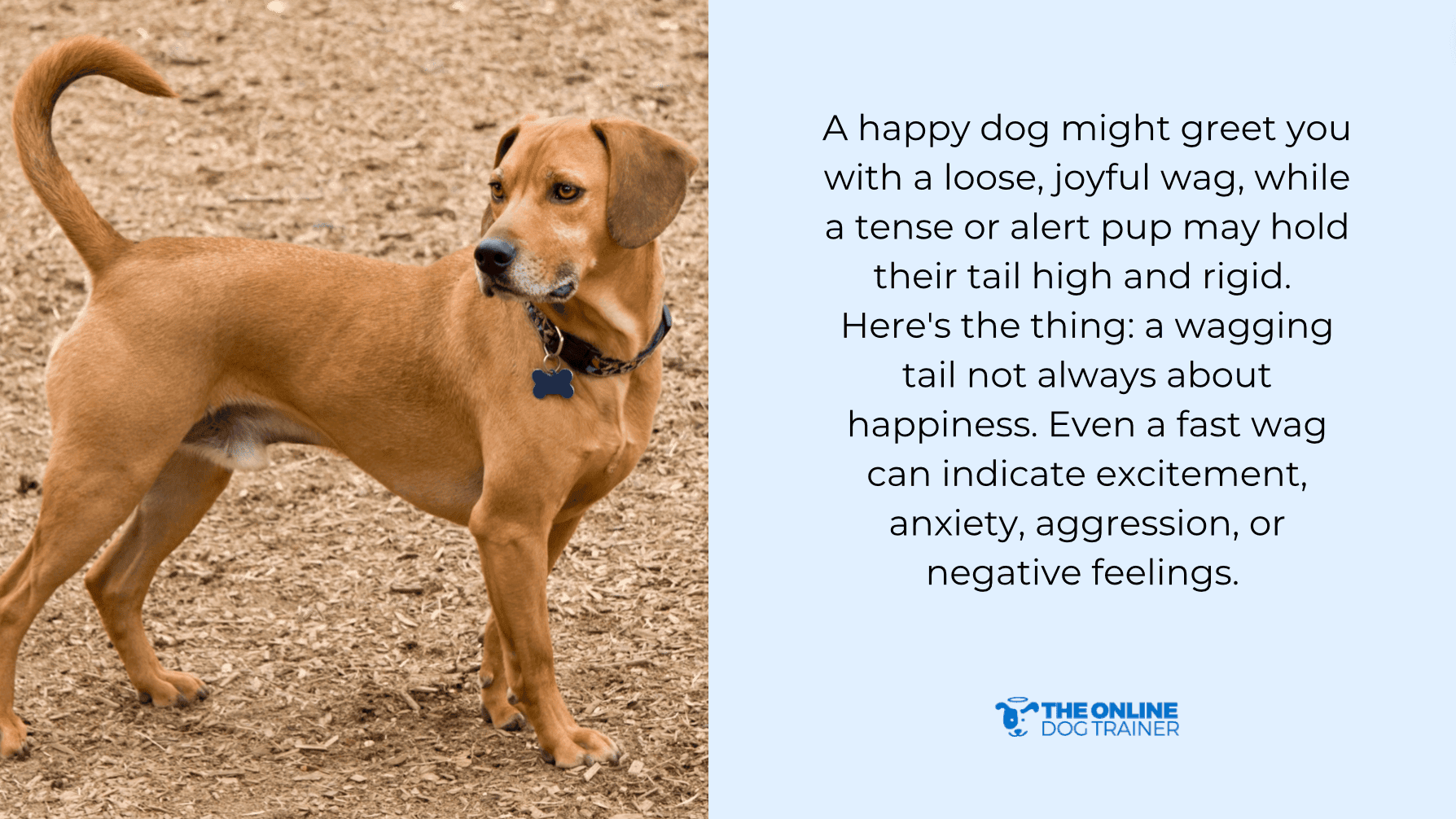
Just like our own body language, a dog's tail can reveal a whole spectrum of emotions.
A happy dog might greet you with a loose, joyful wag, while a tense or alert pup may hold their tail high and rigid.
Here's the thing: a wagging tail is not always about happiness. Even a fast wag can indicate excitement, anxiety, aggression, or negative feelings.
To make your dog's body language easy to understand, think of it like this: the higher the tail position, the higher the tension. And a confident dog will often sport a wagging tail, while a tucked tail can signal fear or insecurity.
Remember, the tail is just one piece of the puzzle in dog communication. Their complex system of communication involves ears, facial expressions, and overall body posture. So, next time you're interacting with a dog, take a moment to observe their tail. It might just tell you a story!
FREE REACTIVITY MASTERCLASSReasons Why a Dog Growls While Their Tail Wags

If a wagging tail doesn't always indicate that your dog is happy, what else could it mean? Here are some reasons for the behavior…
Reason #1: Wagging Tail + Playful Growling = FUN!
When dogs play, they can get really excited, their tails wagging with joy. In the midst of this playful energy, they might growl playfully — a sort of “do you want to play with me?” or “that's my stick!” challenge. It's all part of the fun and games.
Reason #2: Excitement or Overstimulation
Just like a child might scream with excitement, a dog can get so worked up that they growl without even meaning any harm. It's an instinctive reaction to being highly stimulated and alert.
Reason #3: Anxiety or Nervousness
If a dog is feeling a bit anxious, they might let out a little warning growl, almost like saying, “Please be careful; I'm a bit nervous.” It could be that you've accidentally sat on their foot, or they're just not in the mood for petting at that moment.
Reason #4: Defensive Behavior
Sometimes, a dog growls in an aggressive way to protect what they see as theirs — their bed, their food, or even themselves. This growl is a clear message: “Stay away; I feel threatened.” It could be triggered by a small child approaching their bed or someone coming too close while they're eating.
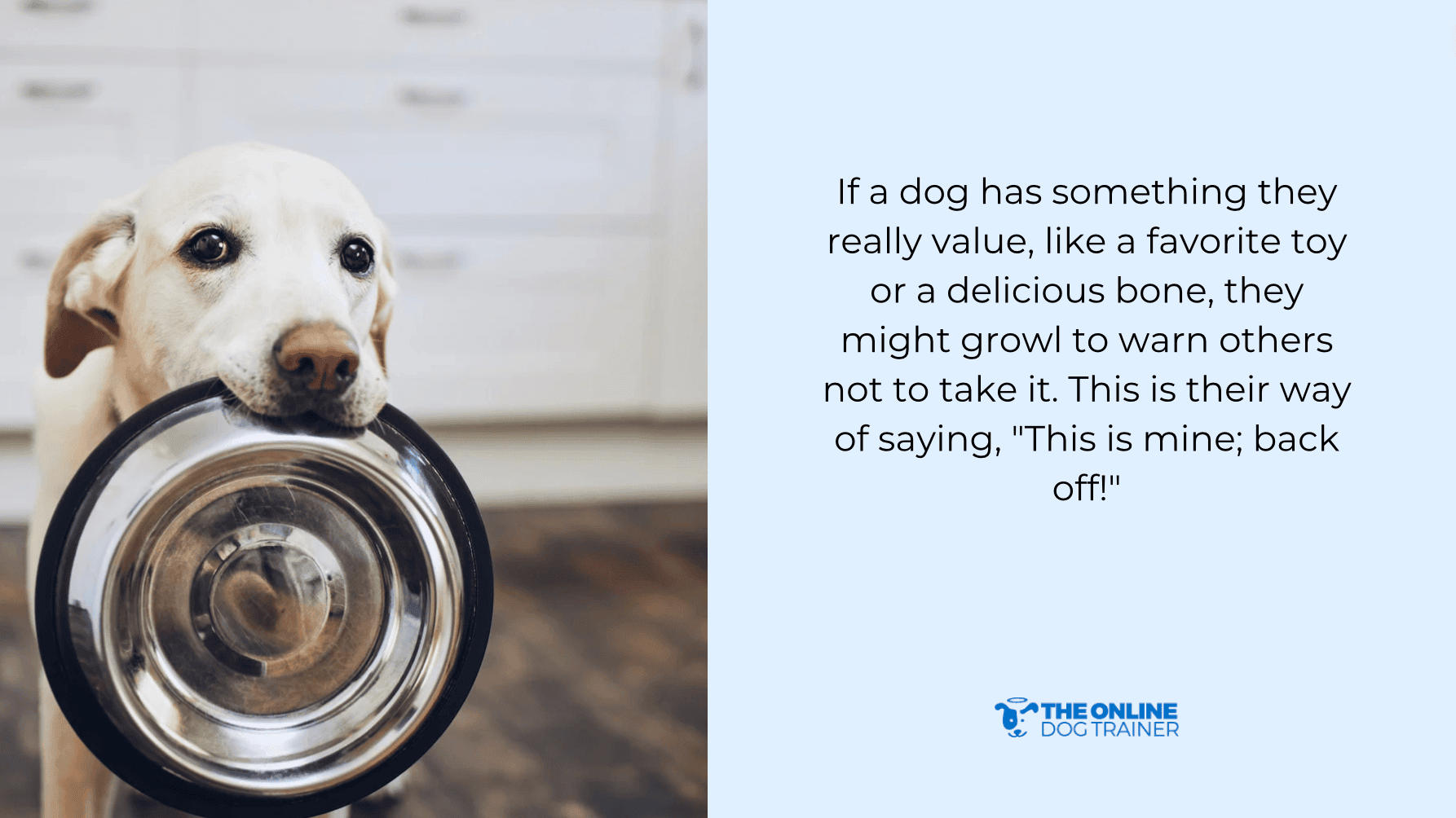
Reason #5: Possessiveness or Resource Guarding
If a dog has something they really value, like a favorite toy or a delicious bone, they might growl to warn others not to take it. This is their way of saying, “This is mine; back off!”
Reason #6: Sickness, Pain, or Discomfort
If a dog is feeling unwell, they might growl to let you know they're not up for being touched or played with. It's their way of communicating that they're in pain or discomfort and need some space to rest and recover.
Check their overall demeanor. If their behavior is out of the normal, refer them to your trusted vet to rule out any sickness.
GET MY 5 GOLDEN RULES FOR FREE!Assessing the Context: How to Appropriately Address Your Dog's Behavior
Understanding the Situation
It's really important to look at the big picture when you're trying to figure out why your dog is acting a certain way. Ask yourself these questions:
- Is my dog behaving normally? Are they moving around like they usually do, or are they more sluggish?
- Is this how my dog usually acts?
- Is my dog in their normal environment, or are they somewhere new and different?
- Are the people around my dog familiar to them, or are they strangers?
All these things can affect how your dog behaves. For example, it's very different if someone the dog knows well adds a bit more food to their bowl compared to a stranger, especially a small child, doing the same thing. The dog might not understand what the child is doing and might growl.
When you understand the context of the situation, you also understand why your dog acts a certain way.
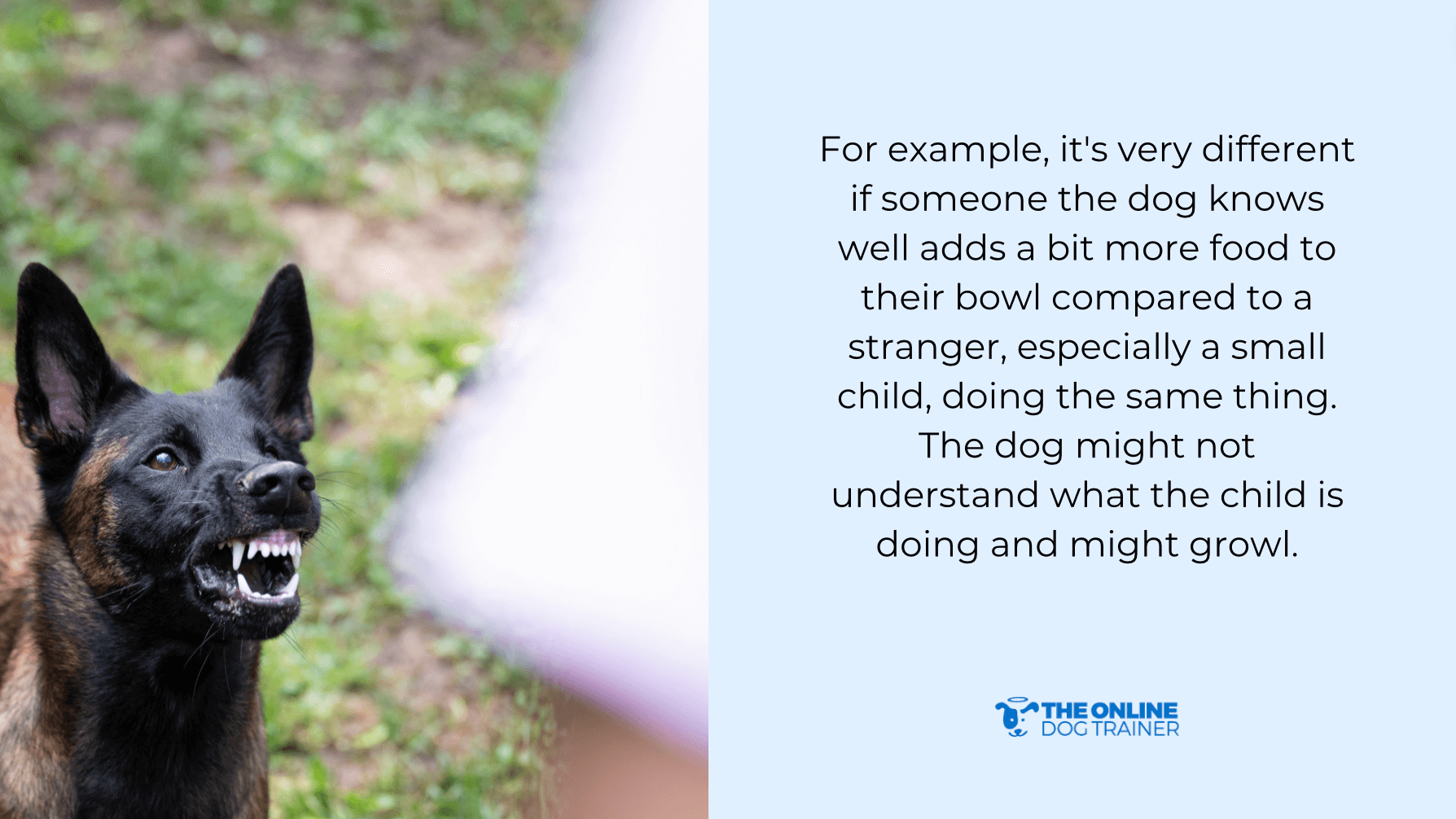
When, Where, and Why
If you're going to talk to a dog expert about the growling, it's important to keep track of the details. Be like a detective and write down:
- Exactly where it happened
- When it happened
- What happened
- Why do you think the dog growled (often, your first guess is right!)
Like what was mentioned above, knowing what triggered the growling can help you come up with better solutions.
REVERSE REACTIVITY (FREE WEB CLASS)Look at the Whole Picture
Pay close attention to your dog's eyes, ears, how they're standing, and their overall body language. This will give you a good idea of how they're feeling. If they only have one eye open and look sleepy, that tells you one thing. If they're alert and excited and seem like they want to play, that's a totally different story.
If your dog is alert and playful, they're probably not sick or hurt.
By looking at the whole situation and your dog's body language, you can better understand why they're growling and wagging their tail.
Reasons Why a Dog Growls While Their Tail Wags
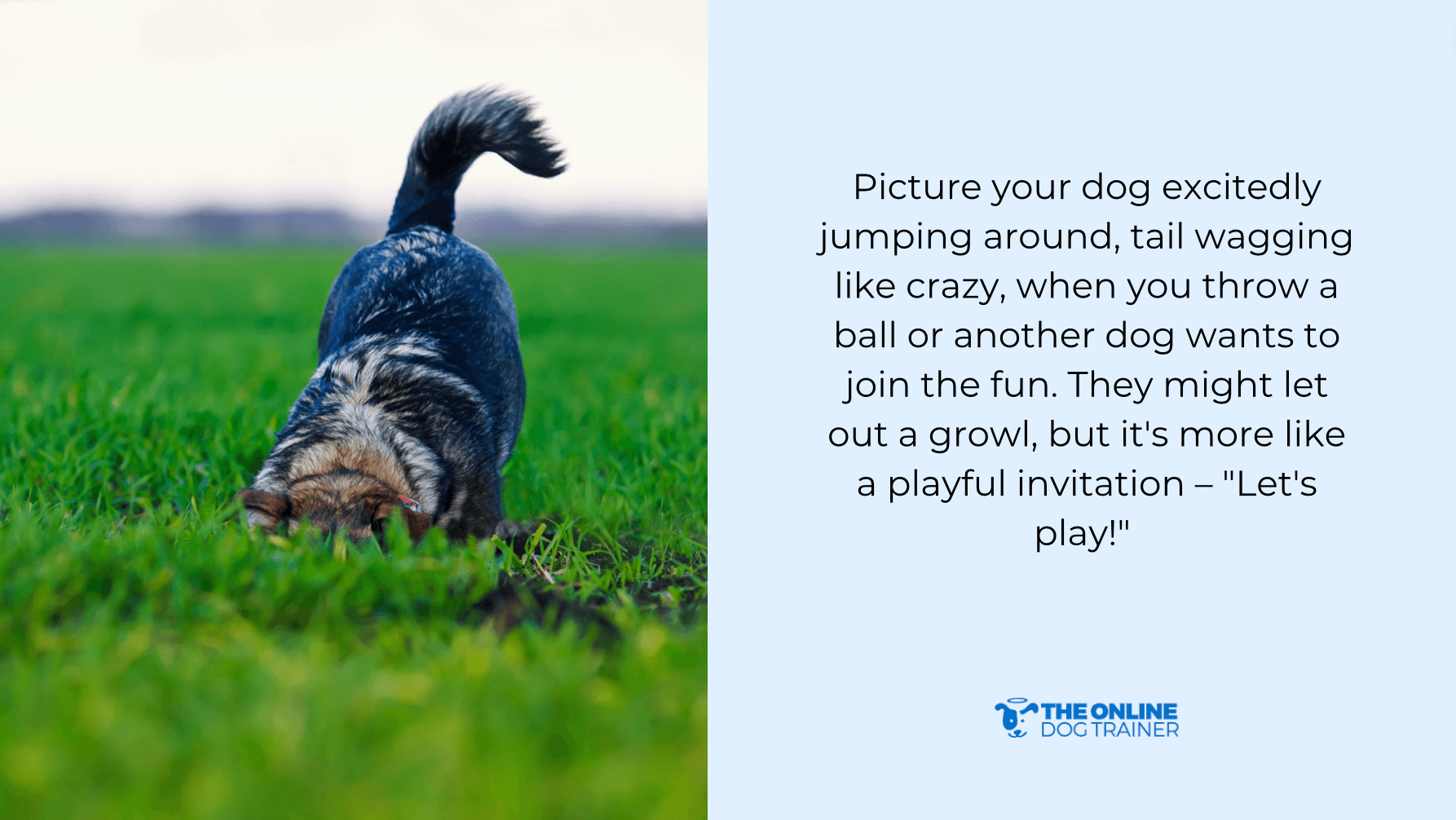
A playful growl usually happens during playtime. Picture your dog excitedly jumping around, tail wagging like crazy, when you throw a ball or another dog wants to join the fun. They might let out a growl, but it's more like a playful invitation – “Let's play!” Their body language is loose and relaxed; no tense muscles, no raised fur, and definitely no bared teeth.
An angry growl, on the other hand, is a serious warning. It sounds deeper and more menacing, like a low rumble. Your dog might appear stiff, with their fur standing on end (think “Halloween cat!”). They may even show their teeth. This is their way of saying, “Stay away!”
Remember:
- Playful growl: Happy, relaxed body language, wagging tail.
- Angry growl: Tense body, raised fur, possibly showing teeth.
Remember:
REACTIVITY SOLVED (NO FOOD, NO FORCE)What to Do When Your Dog Growls and Wags Its Tail
#1. Stay Calm, and Don't Punish

When your dog growls, it's their way of communicating that they're uncomfortable or feeling threatened.
I recommend remaining calm, gentle, and avoiding any form of punishment, such as yelling or physical reprimand. These actions will only intensify their fear or anxiety, potentially leading to a bite.
Instead, calmly remove yourself from the situation and give your dog space to de-escalate. If your dog is injured, they might be particularly sensitive, so it's even more important to give them space and avoid any actions that might make them feel threatened.
#2. Figure Out the Cause
Take a moment to analyze the situation and try to identify what triggered the growl.
Did you accidentally step on their tail or touch a sensitive spot? Are you near their food bowl, favorite toy, or bed? Are they bothered by other animals? Perhaps they're feeling uncomfortable or overwhelmed by a loud noise or a crowded environment.
By understanding the cause, you can avoid similar situations in the future and help your dog feel more secure.
JOIN MY FREE REACTIVITY CLASS#3. Check for Pain or Discomfort
Sometimes, growling can be a sign that your dog is in pain or feeling unwell. Observe their behavior closely. Are they limping, moving slowly, or acting lethargic? Have they lost their appetite, or are they less responsive than usual? If you notice any of these signs, it's important to consult your veterinarian to rule out any underlying medical issues.
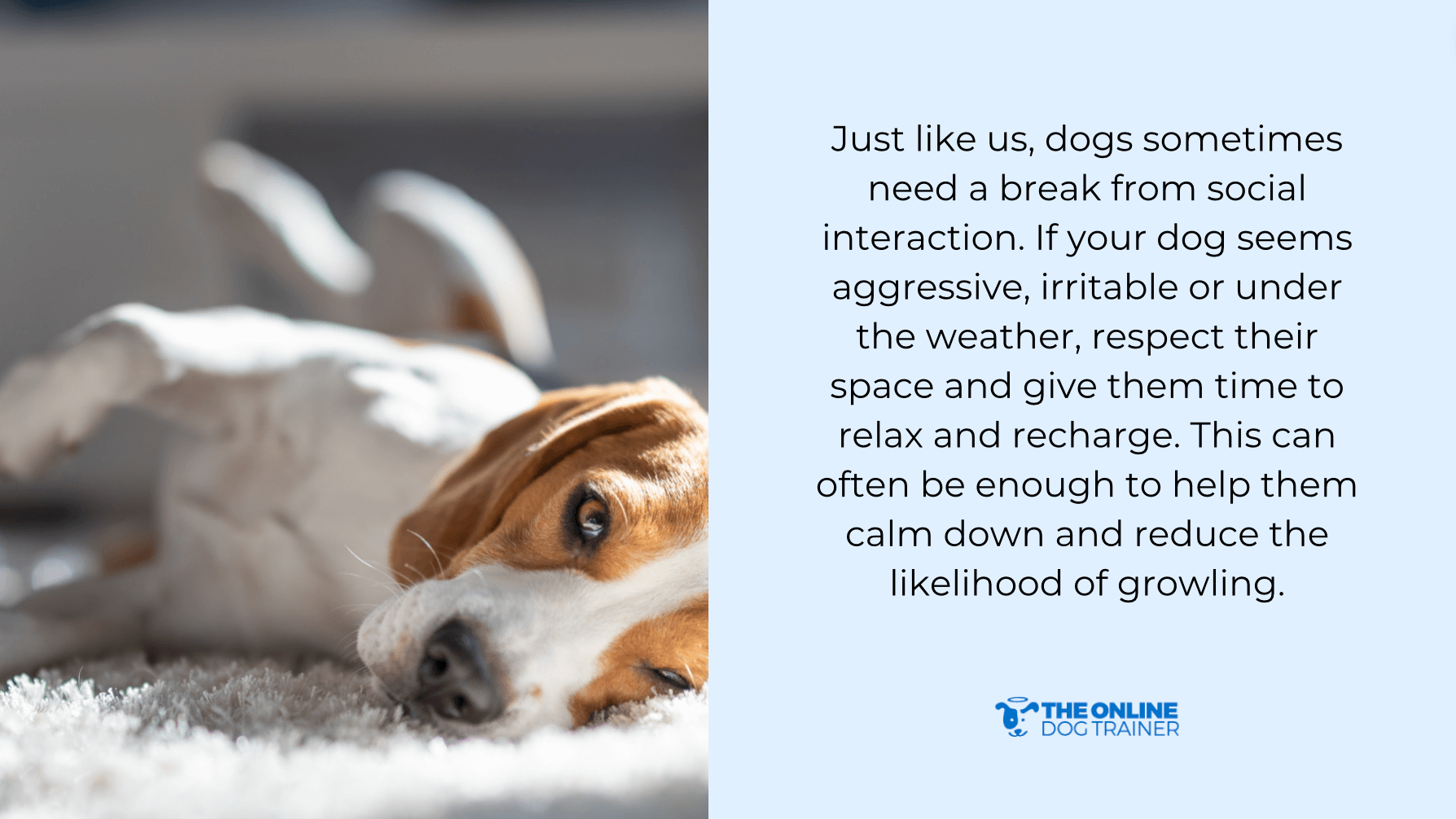
#4. Give Space and Time
Just like us, dogs sometimes need a break from social interaction. If your dog seems aggressive, irritable or under the weather, respect their space and give them time to relax and recharge. This can often be enough to help them calm down and reduce the likelihood of growling.
#5. Try Behavior Modification
If the growling persists or is frequent, consider working with a professional dog trainer or behaviorist.
They can help you gain a deeper understanding of your dog's behavior, identify the root causes of their growling, and teach you how to use positive reinforcement and training techniques to modify their behavior. They can also help your dog build confidence and feel less threatened in various situations.
LEARN THE DOG CALMING CODE (FOR FREE)#6. Get Professional Help
If your dog's growling escalates or you feel unsafe, don't hesitate to seek professional help from a qualified trainer or behaviorist. They have the expertise to assess the situation, develop a customized behavior modification plan, and work with you and your dog to create a safe and comfortable environment for everyone.
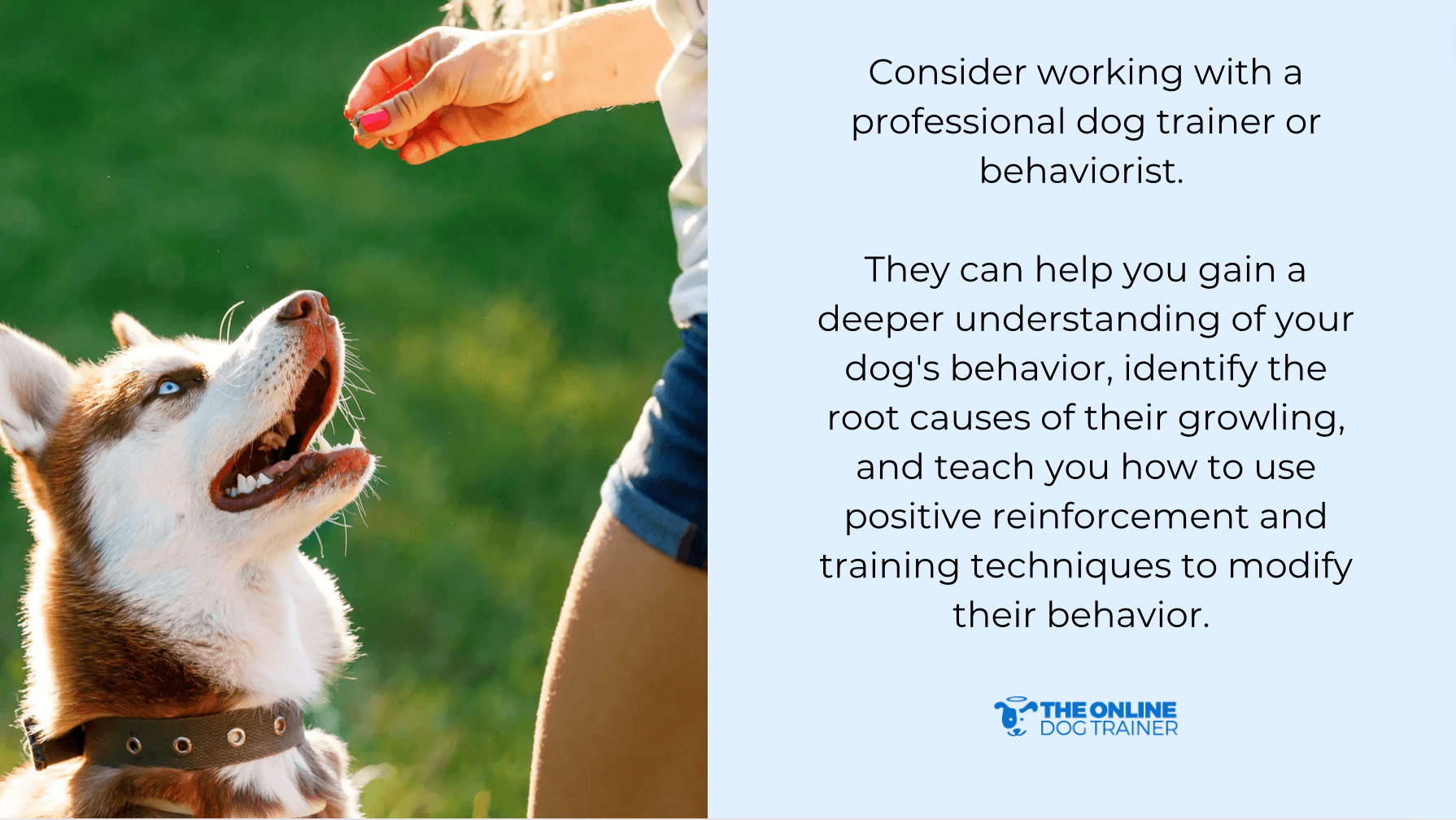
Tips to Prevent Dog Growling in the Future
Tip #1: Early Training and Socializing is Key
Puppies learn a lot when they're young. It's important to introduce them to different people, places, and other dogs. This helps them become more confident and less likely to feel threatened, which means there will be less barking and growling.
Tip #2: Keep Things Consistent and Use Rewards
Dogs love routines! Feed them and walk them at the same time each day. Also, always use the same words for commands. This helps them understand what you want. When they do something good, give them praise or a treat. This makes them happy, and they want to do it again.
Tip #3: Know What Upsets Your Dog and Avoid It
If you know what makes your dog growl, try to keep them away from those situations. For example, if they growl at other dogs while in the car, keep the windows closed.
FREE REACTIVITY MASTERCLASSTip #4: Use a Leash and Muzzle When Needed
If your dog gets nervous or excited easily, a leash and muzzle can help keep them and others safe. There are comfortable muzzles that let your dog breathe and enjoy walks without being able to bite.
Tip #5: Make Sure Your Dog is Happy and Healthy
Dogs need food, exercise, and fun things to do. Make sure they get plenty of all three! A happy and tired dog is less likely to growl.
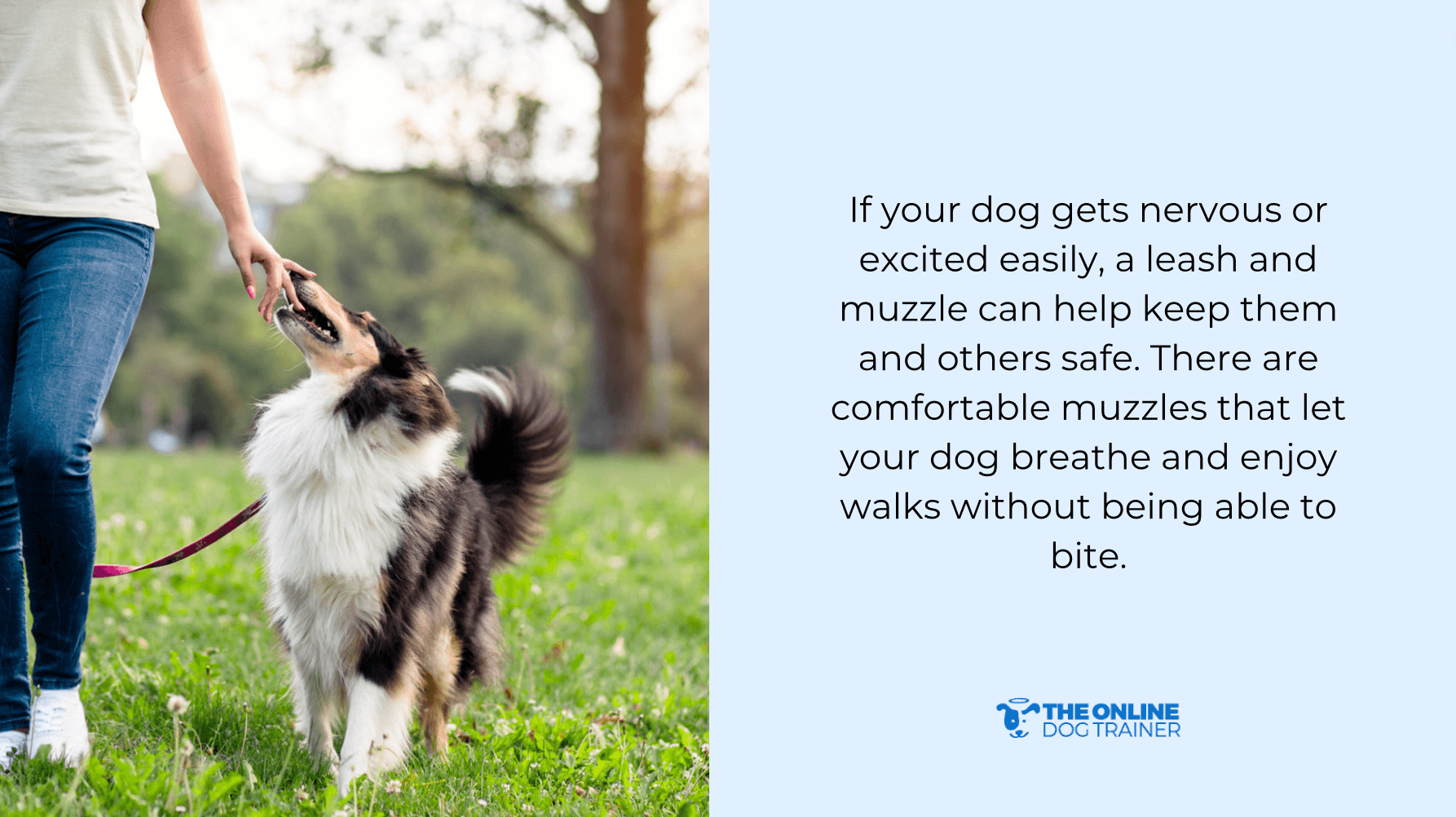
Know How to Deal with A Dog Growling But Wagging Tail With Our Free Webinar!
Our dogs come with behavior that's hard to understand or deal with.
As a dog trainer, I want every dog owner to know that they can help their dogs better when they use dog psychology.
That's why in my Free Webinar on Dog Reactivity, I share really helpful tips to help dog owners understand their dogs in a deeper level.
Registering for this webinar is totally free. If you want to truly know what your dog is communicating, join my webinar.
REVERSE REACTIVITY (FREE WEB CLASS)
~Doggy Dan
FAQ
Answer: A dog growling while wagging its tail is communicating a state of conflict or high arousal, not necessarily happiness. A wagging tail indicates emotional energy, which could be excitement, anxiety, fear, or frustration. The growl is a warning that the dog is uncomfortable. To understand their true feelings, you must look at their complete body language, not just the tail.
Answer: Look at the dog's overall posture and the context. A playful growl is typically accompanied by a relaxed, “bouncy” body, a play bow (front end down, rear end up), and loose, sweeping tail wags. An aggressive or anxious growl is often paired with a stiff, tense body, raised fur (hackles), lip curling, staring, and a high, stiff, or low, tucked tail.
Answer: No, a growl is not inherently “bad.” It is a vital form of communication. It's your dog's way of saying, “I am uncomfortable with this situation, please stop.” You should never punish a dog for growling, as this can teach them to suppress their warning signal and potentially bite without giving a warning first.
Answer: A dog may growl for many reasons, including play, overstimulation, anxiety, defensiveness, or resource guarding (protecting food, toys, or territory). It can also be a sign of physical pain or discomfort, so it's important to rule out any underlying medical issues if the behavior is new.
Answer: Yes, the style of the wag is a key piece of body language. A loose, sweeping, full-body wag usually indicates happiness. A high, stiff, fast wag can signal arousal or aggression. A low or tucked wag often indicates fear or insecurity. The tail is just one part of the puzzle.
Answer: The first and most important step is to calmly and immediately stop what you are doing and give the dog space. Do not make sudden movements, yell, or stare at the dog, as this can escalate the situation. By backing away, you relieve the pressure on the dog and show you respect its warning.
Answer: Immediately and safely separate the dog from the child or other pet. Your priority is to ensure everyone's safety. Afterwards, try to identify what triggered the growl so you can manage the environment better in the future and prevent the situation from reoccurring. Do not leave a dog with a history of growling at children unsupervised around them.
Answer: Prevention involves proactive training, socialization, and management. Ensure your dog is well-socialized from a young age, use positive reinforcement training to build confidence, and learn to recognize your dog's subtle signs of stress. Providing a predictable routine, adequate exercise, and mental stimulation also helps reduce anxiety that can lead to growling.
Answer: Absolutely. Sudden changes in behavior, including new or increased growling, can often be linked to pain or a medical condition. If your dog suddenly starts growling in situations it previously tolerated, a visit to the veterinarian is highly recommended to rule out any underlying health issues.
Answer: You should seek professional help if the growling is frequent, intense, or escalating. If you cannot identify the trigger, or if the growling has led to a snap or bite, it is crucial to contact a certified professional. They can help you create a safe and effective behavior modification plan tailored to your dog's specific needs.






